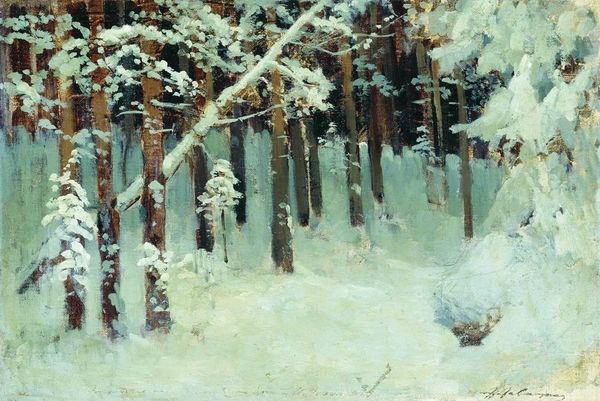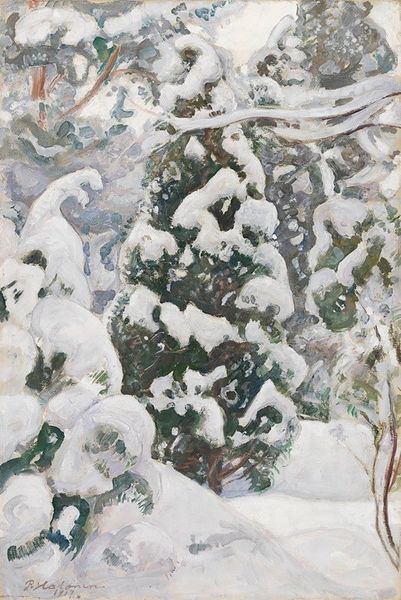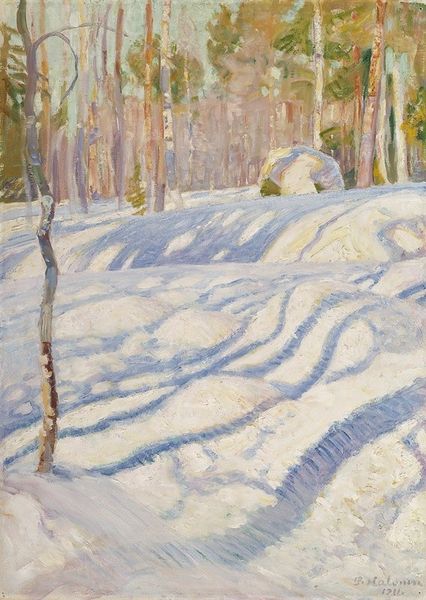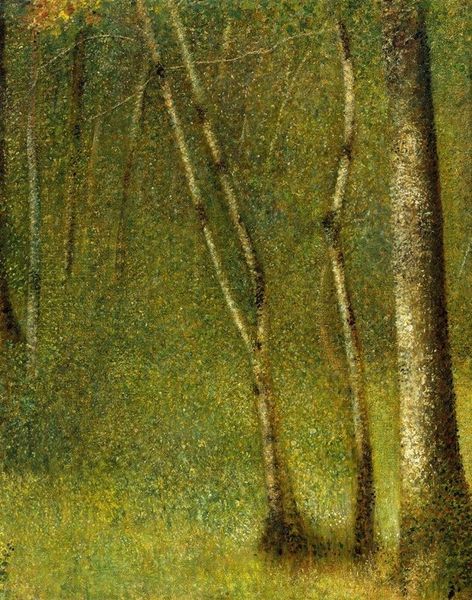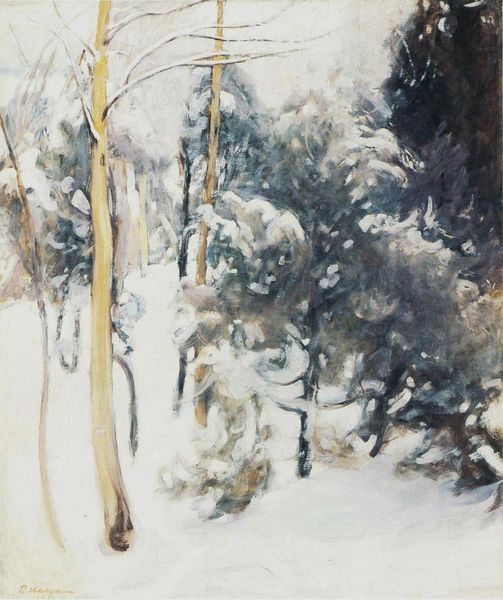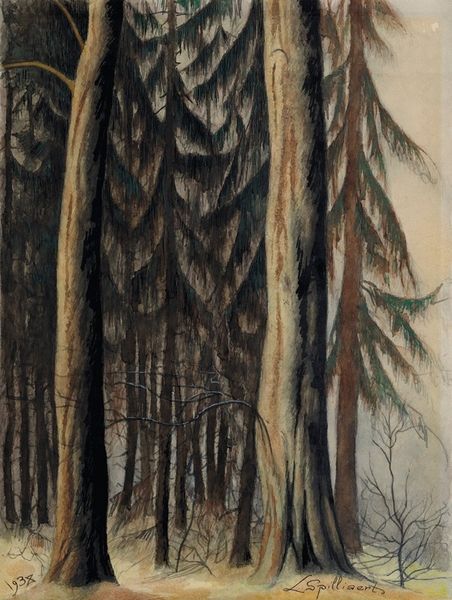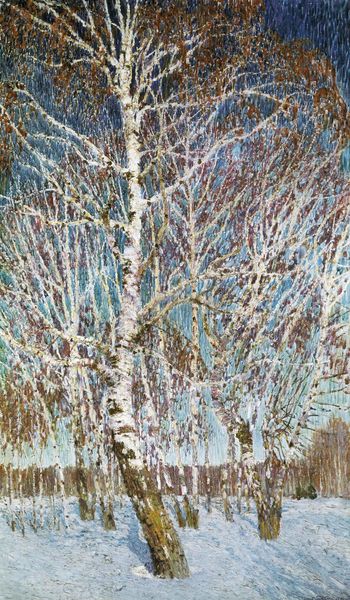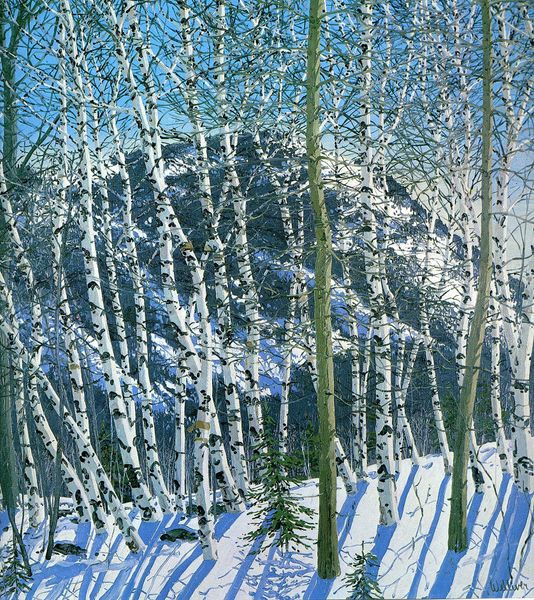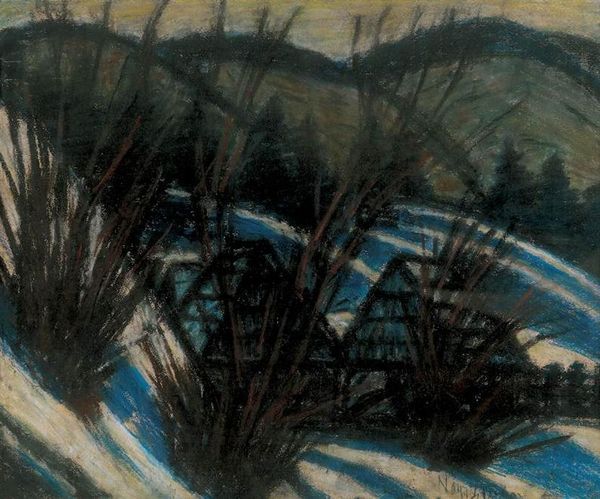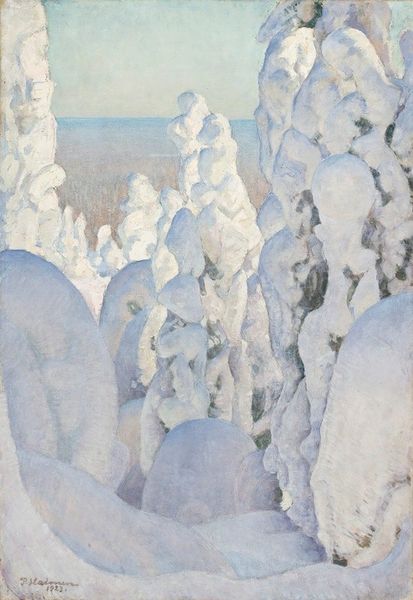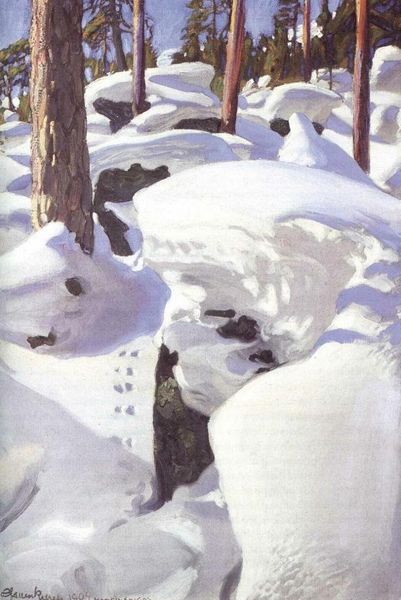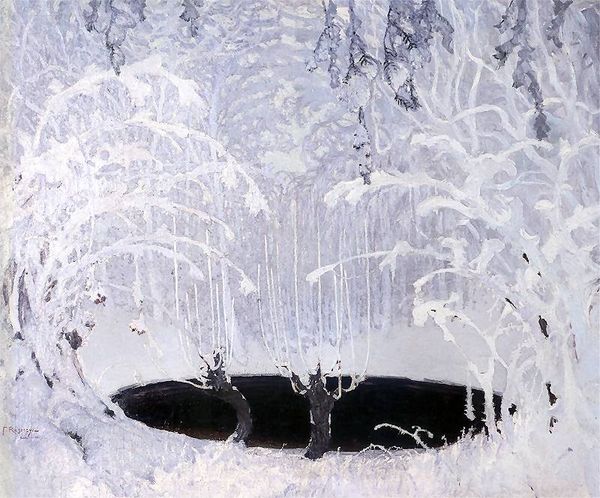
Copyright: Public Domain: Artvee
Editor: Pekka Halonen’s “Day in March,” painted in 1910 using oil paints, captures a snow-covered forest scene. The cool blues and whites create a serene yet slightly melancholic mood for me. What's your interpretation of it? Curator: It’s a beautiful piece reflecting Finland's burgeoning national identity at the time. How do you think the stark landscape reflects social or political tensions? Remember, this was a period of Russification policies in Finland. Editor: That’s fascinating. I hadn’t considered the political context. It makes the seeming simplicity feel more charged somehow, more resistant. Could the bare trees symbolize a kind of stark resilience? Curator: Precisely. And notice how the landscape dominates – is that figure absent or implied? The heroic landscape paintings, seen throughout the 19th century, often symbolized a kind of national strength and purity, in opposition to foreign influence. Does that ring true to you here? Editor: Yes, definitely. The painting, through this lens, stops being merely a pretty scene, it transforms into a statement of national pride during Russian oppression. This makes me question the intent behind landscape paintings as such. Curator: Absolutely, you're questioning the intent and inherent political dimensions in works. Even seemingly benign art participates in larger cultural conversations. This painting shows us art doesn't exist in a vacuum, right? Editor: Definitely, recognizing its historical backdrop really enriches how the viewer perceives it. Curator: Precisely. Considering such paintings as tools, like any form of communication, allows a richer dialogue.
Comments
No comments
Be the first to comment and join the conversation on the ultimate creative platform.
